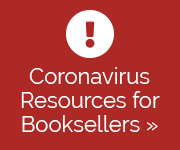- Categories:
Best Practices for Creating an Effective Bookstore Press Kit
On May 11, Maribeth Pelly, founder of Easy Marketing Strategies and the event planner for BookTowne in Manasquan, New Jersey, led a webinar for American Booksellers Association members on how to create a bookstore press kit.
Like many independent bookstores, BookTowne faces challenges when it comes to booking author events, but speed-dating events with publishing personnel have proven effective in making a connection and letting publishers know that the store is worth doing business with, Pelly said during the webinar.
A bookstore’s press kit, which is ideally limited to two pages, aims to express the highlights of the bookstore to whoever is reading it — whether that is a publisher, an author, or the media — and then continue to effectively represent the store on all those points once the meeting is over.
“A press kit gives you the opportunity to identify what’s unique about your store,” said Pelly. “There are things that make us each unique and we want to be able to promote that on this document.”
Pelly directed webinar attendees to the New Atlantic Independent Booksellers Association website to find sample press kits from various stores in the region. She encouraged booksellers to model their own press kits after these, but avoid copying them.
A recording of the “Creating a Press Kit for Your Store” webinar will be made available to ABA member booksellers in the coming weeks; watch Bookselling This Week for updates.
According to Pelly, the must-haves for a bookstore press kit are:
- Who you are: Include the store’s name, address, website, phone number, and e-mail address; the store’s logo and a photo of the store; the store’s social media accounts and number of followers; and who to contact for event planning.
- Where you are: Provide distances and driving time from major cities and airports, nearby accommodations, demographic statistics, and a description of the store’s community.
- Successful events: Highlight recent events across a range of genres and age groups. List the event date, the title and author, the publisher, the sales and attendance, and the conversion rate.
- Who your partners are: Share details about the store’s partners that co-host or co-market events, including restaurants, theaters, colleges and universities, libraries, or partnerships currently in development.
Pelly shared several examples of independent bookstore press kits and provided additional tips for booksellers to keep in mind when creating their own store press kit:
- Break information up into an easy-to-read format; use grids, bullets, or boxes.
- Be succinct; this is not a place to share your memoir or the store’s story.
- Use headers and footers on each page.
- Show what makes your store unique, such as your store’s newsletter subscriber list, its partners, and its location and the population it serves.
- Provide key local media contacts, including their names, publications, and e-mail addresses or phone numbers.
- Use photos from author events that demonstrate the setup of the store, particularly where the author and audience are situated in the event area.
- Highlight how your store gets the message out about events, whether through newsletters, social media, print ads, online calendars, or a store marquee.
- Update your press kit at least once a year or as often as needed, especially for important meetings.
- Indicate if your store reports to bestseller lists; if your store does not report and you would like information on how to do so, contact ABA Member Relationship Manager Nathan Halter.
- For stores just starting to create an events program, work with local authors and include author testimonials in your press kit; be sure to convey the store’s commitment to growing its program.
Booksellers can contact Pelly if they are interested in working with her on developing their press kits.

